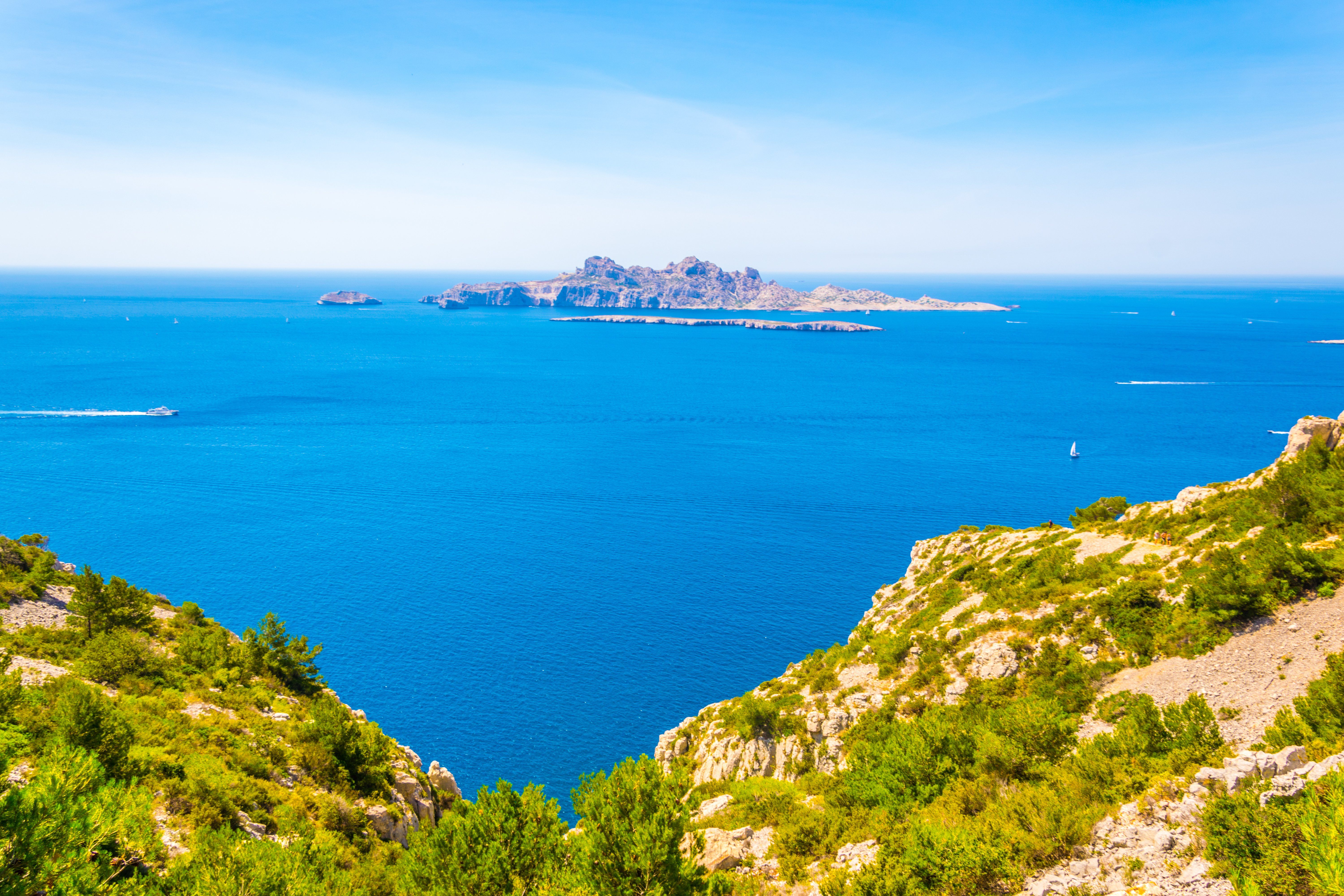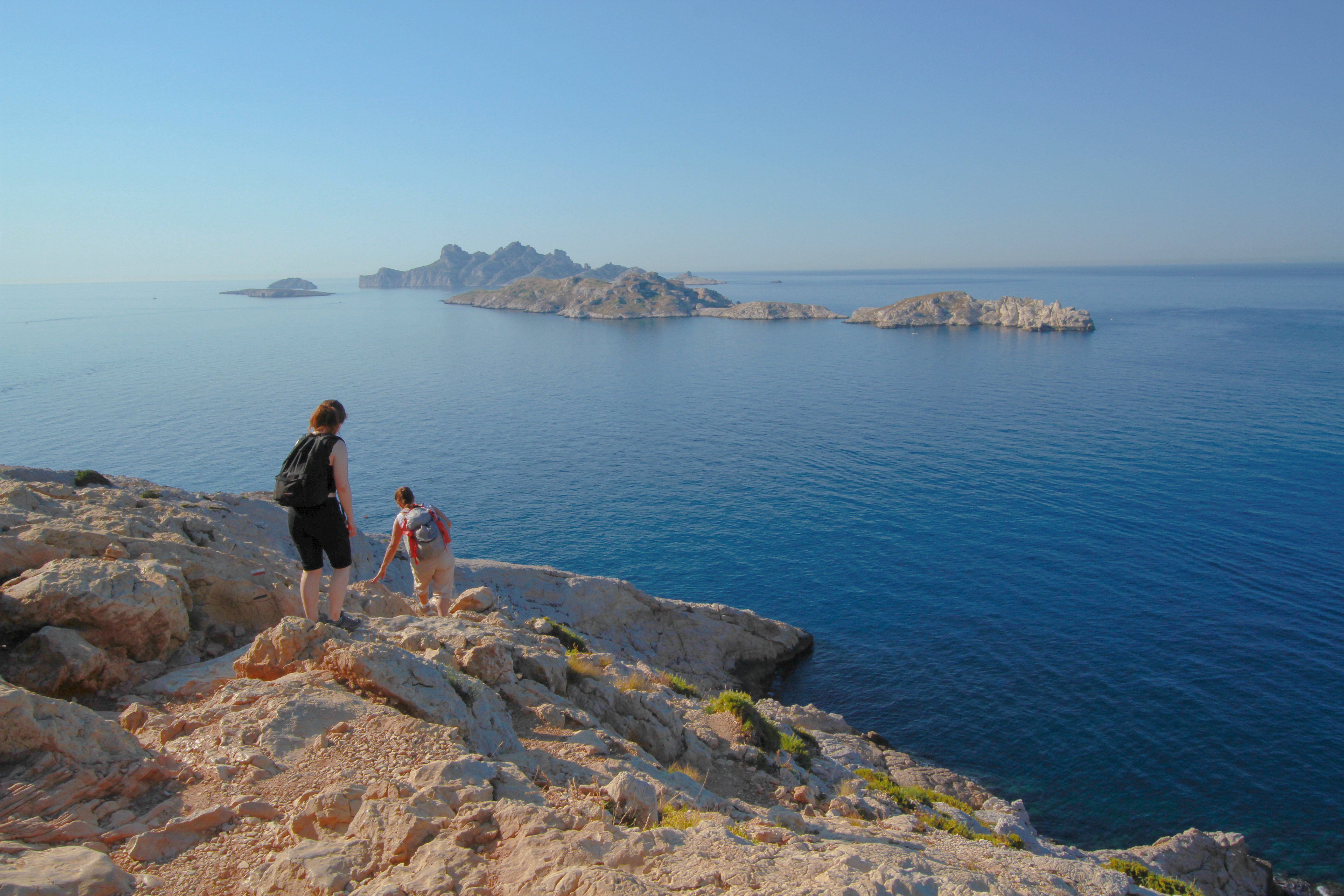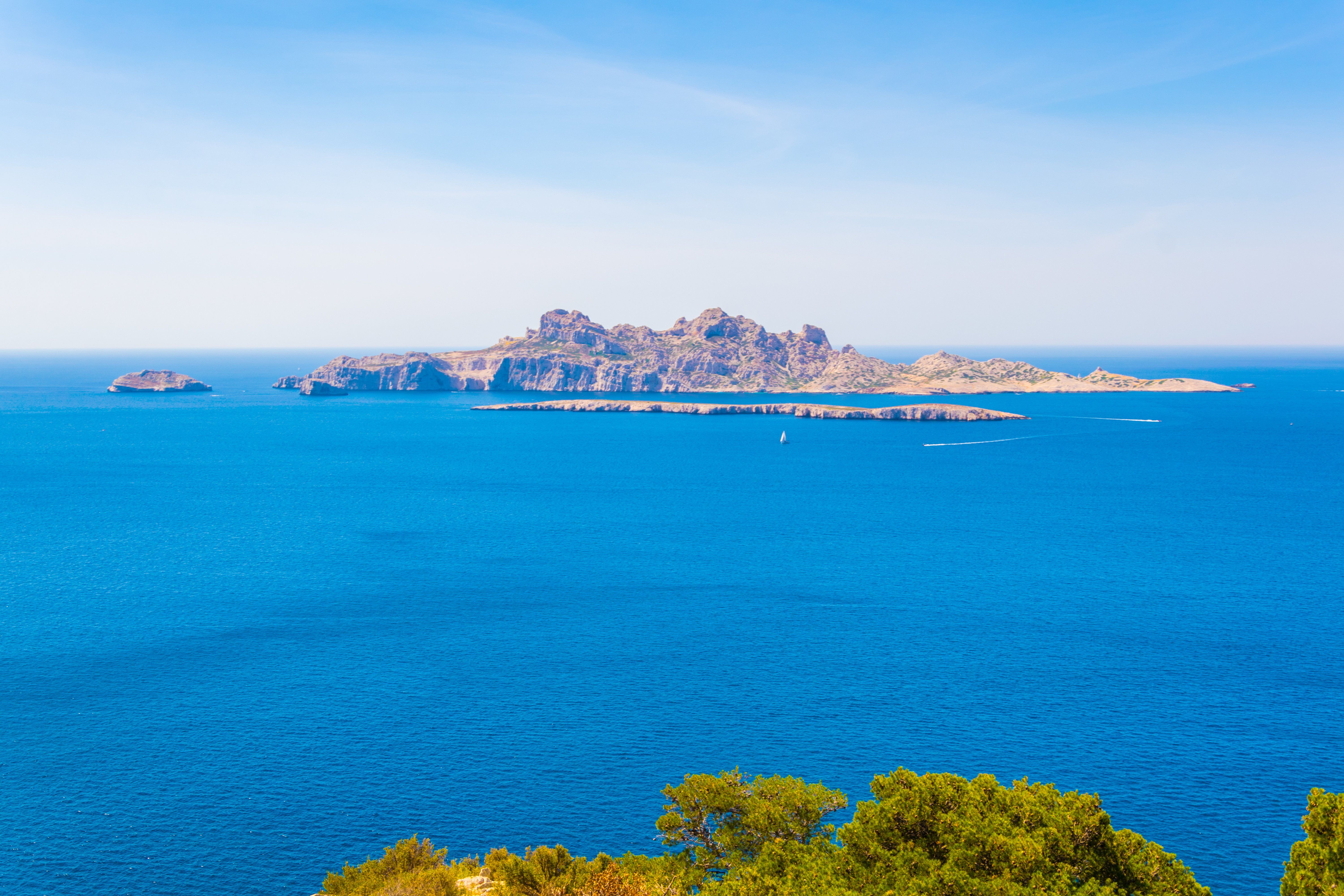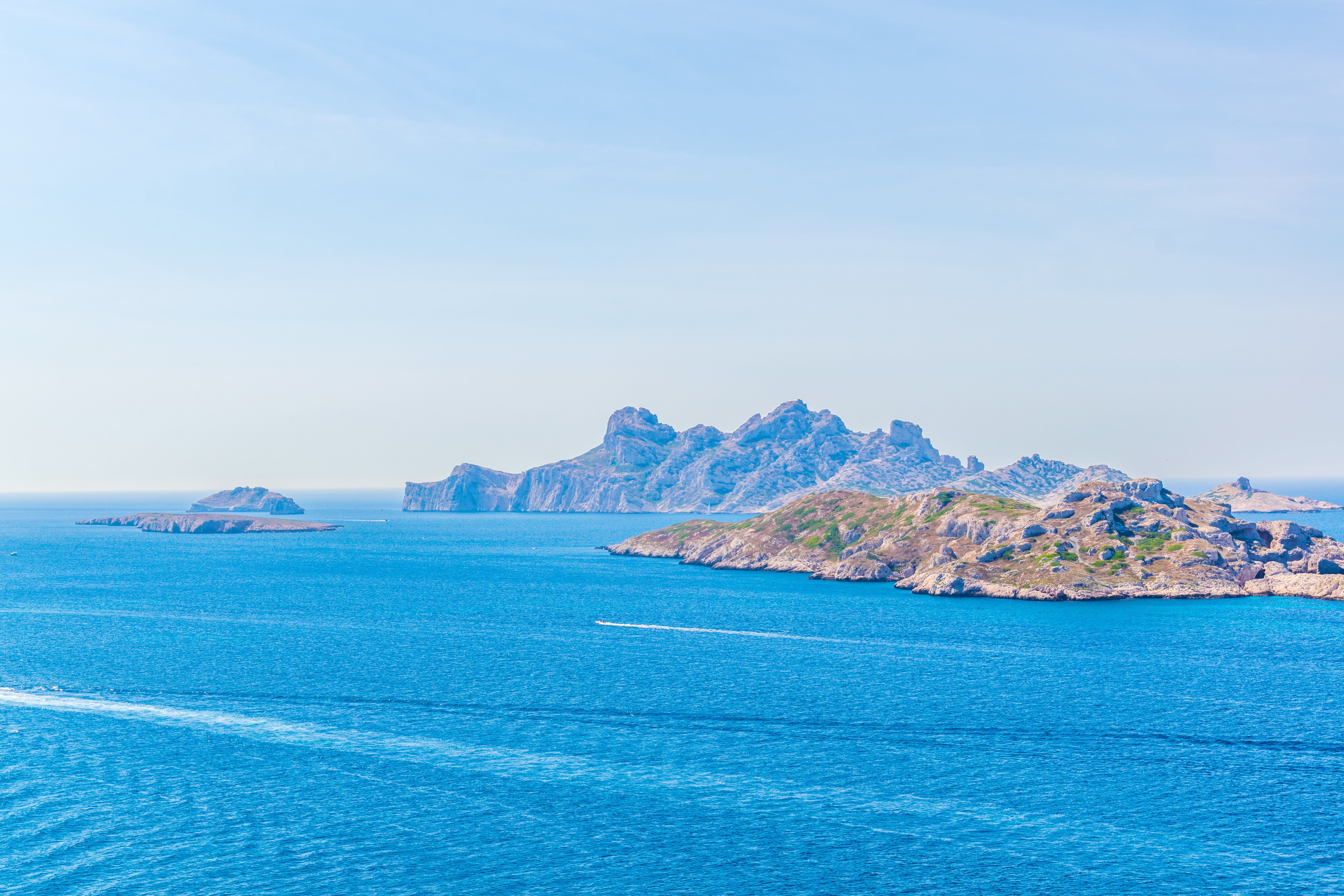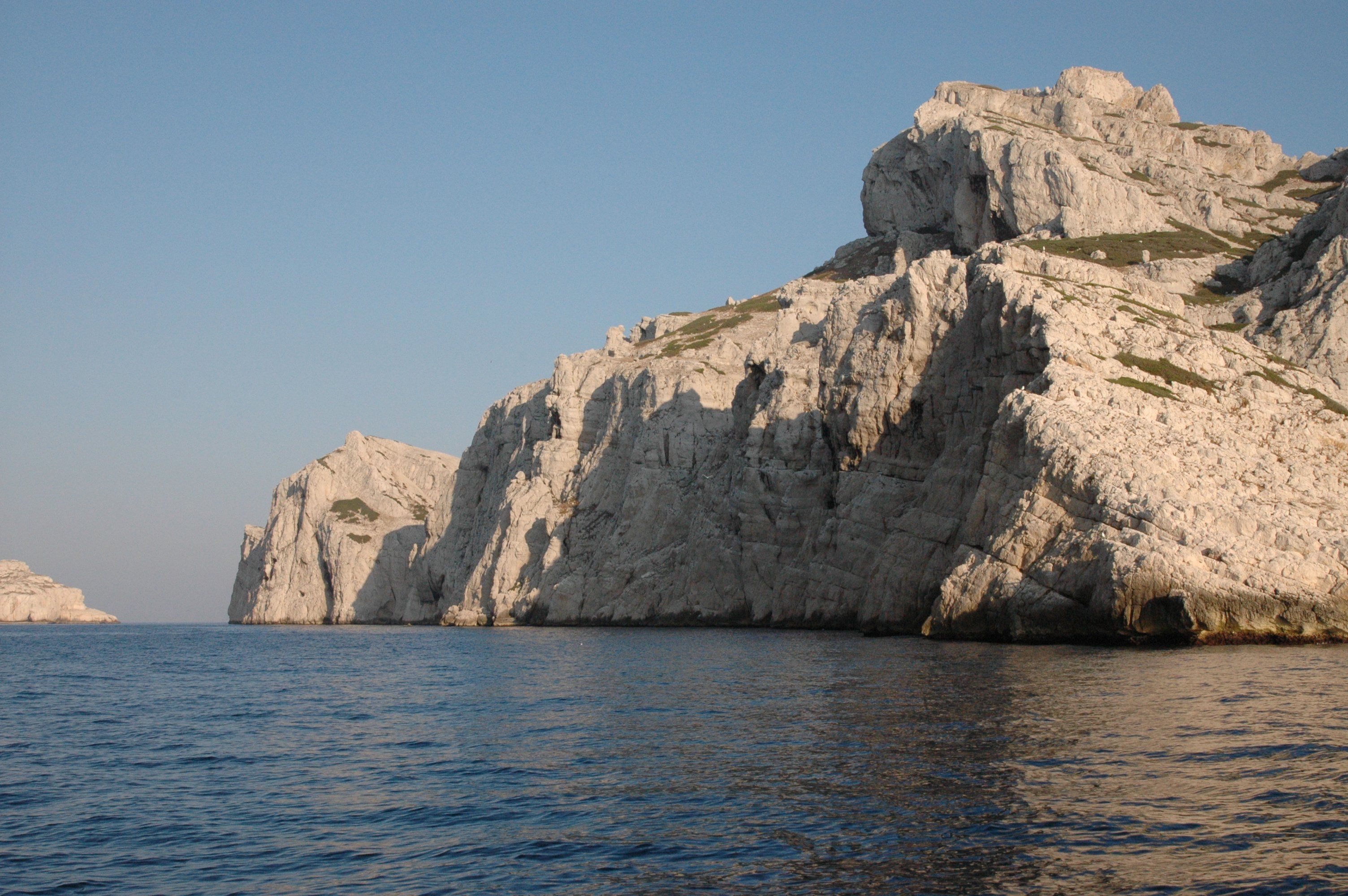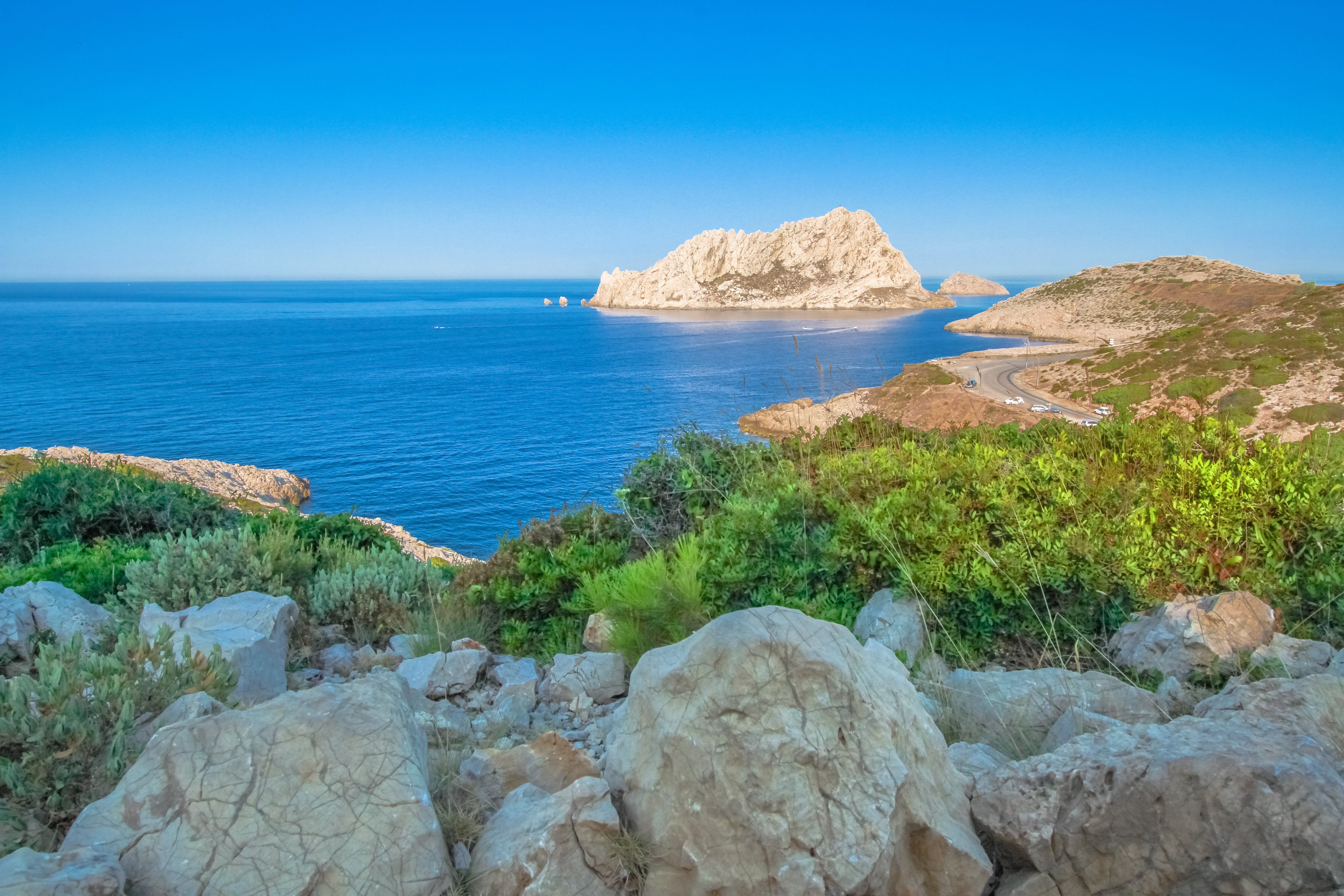A rich historical heritage
At the extreme south of Marseille, off the Calanques massif, lies the Riou archipelago. Visible from the coasts of Marseille, it extends over nearly 162 hectares and includes several islands and rocky heaps.
As evidenced by the pottery remains and tools discovered in the sandpit valley, the first human activities date back to the Neolithic period, when the archipelago was a peninsula.
During antiquity, and even after, the archipelago received sailors and fishermen and served as a landing place.
It was also an ideal position to watch the coasts off Marseille. At the end of the 1800s, it was rented to private individuals. Its sand was extracted to supply the work carried out on the land.
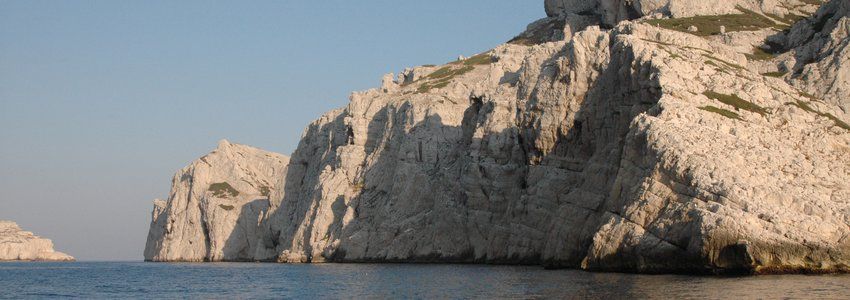
An incredible biodiversity
A former nature reserve, it was in 2002 that the Riou archipelago joined the Calanques National Park, which encourages the protection of its fauna and flora. Its access is also restricted to control tourist inflows. With no less than 320 plant species, including 18 protected by law, the Riou archipelago is appreciated by nature lovers who can come to observe or discover new varieties of flowers and animal species. During your walk, you will be able to see an ocellated lizard, a lizard, an ashen shearwater, a Mediterranean shearwater or a storm oceanite.
A renowned place of underwater archaeology, it is to the east of this island that the remains of Antoine de St Exupéry's plane were found.
The Riou archipelago and its many islands
Riou Island is about 2 kilometres long and 500 kilometres wide and is one of the largest in the archipelago. It is on its sandy or pebble beaches, located to the north, that you can dock. With its large white limestone cliffs, the site owes its popularity to the beauty of its seabed and its incredible animal diversity.
Jarre Island is a small island that was set on fire with the Grand Saint Antoine, a three-masted sailboat that brought the plague to Provence in 1720, the remains of the wreck were discovered in 1978 and its remains are visible at the Caroline Hospital Museum on the island of Ratonneau du Friou.
Plane Island is characterized by its particularly flat relief, its regular coast, its pretty cove and the Calanque des Pouars.
Maïre Island is a small islet, located west of the Calanques massif and only 80 metres from the coast. Swimming is strictly prohibited due to its strong sea currents.
